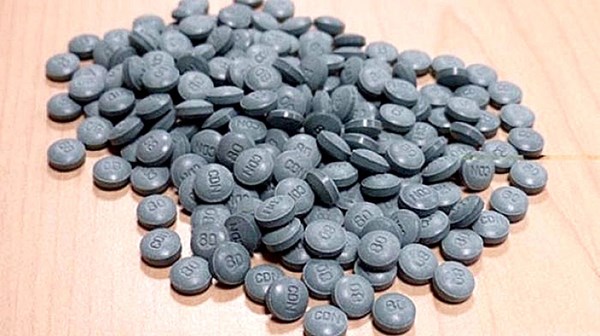The number of overdose deaths has more than doubled in Coquitlam over the last year, an increase largely attributed to the rise of the use of fentanyl.
According to figures released Wednesday by the BC Coroners Service, 29 people in the municipality died of overdoses in 2017, with fentanyl being detected in 21 of the cases. That is a sharp increase from 2016, when Coquitlam saw 14 illicit drug OD, of which eight saw the presence of fentanyl.
Lisa Lapointe, B.C.’s chief coroner, said Coquitlam’s numbers mirror a larger trend across B.C.
“Drug deaths not involving fentanyl have stayed relatively stable,” she said, noting that the figures are expected to increase as more post-mortem testing results are received. “But for fentanyl, we would not be seeing the deaths that we are seeing.”
Because fewer than five deaths occurred in Port Coquitlam and Port Moody, numbers for those cities are not made public for privacy reasons.
But figures are available for the Fraser North region, which includes all of the Tri-Cities, Anmore, Belcarra, Burnaby, New Westminster and Pitt Meadows.
In 2017, that region saw 140 illicit drug overdose deaths, with fentanyl being detected in 106 cases (75.7%). Province-wide there were 1,422 illicit drug overdose deaths, with fentanyl detected in 1,156 (81.3%) of all cases.
Dr. Perry Kendall, B.C.’s outgoing provincial health officer (he was replaced this week by Dr. Bonnie Henry), said it is time for governments to take a new approach to combating the crisis. Policy makers and the public are going to have to get “further outside the box and our comfort zones if we are going to get ahead,” he said. Attitudes need to change around legalization and de-stigmatization, Kendall added.
“At the very least, we should be looking at decriminalizing the individuals who are at risk,” he said.
Because there is no oversight over black market drugs, Kendall said they are even more dangerous. When a large number of deaths occur in a concentrated area over a short period of time, he said, it can often be attributed to one drug dealer incorrectly mixing their batch.
There have been no deaths reported at sanctioned consumption sites or drug overdose prevention sites, he added, noting that 90% of people die consuming drugs alone in their homes when nobody is there to help them if they OD.
Kendall said many drug users feel shame when they relapse and pull back from friends, family and supports, making them even more vulnerable. Relapses should be expected, he added, and ongoing community support is necessary in order to get people off drugs long term.
While the data in the annual report was bleak, Dr. Patricia Daly, the executive director and clinical lead for the BC Overdose Emergency Response Centre, and chief medical health officer for Vancouver Coastal Health, said the number of deaths has been decreasing in recent months.
Across the province, there were an average of 96.5 deaths per month between September and December, down from 129.5 deaths per month in the first eight months of the year.
But Daly said it is too early to say whether the decrease is a trend.
“We are cautiously optimistic,” she said.
@gmckennaTC
QUICK FACTS
• More suspected illicit drug overdose deaths occurred during the five days following income assistance payments than in all other days of the month so far in 2017, with an average of six deaths per day.
• Fraser Health had the highest number (377) of illicit drug overdose deaths where fentanyl was detected in 2017, followed by Vancouver Coastal Health (337) and Interior Health (200).
• Approximately four out of five overdose deaths involve males.
• Almost nine out of every 10 deaths occurred indoors, including more than half in homes.
• Half of the 2017 deaths involved persons between the ages of 30 and 48 years of age, with people between 19 and 59 accounting for 90% of all overdose deaths.
• The three municipalities with the largest number of illicit drug overdose deaths in 2017 are Vancouver (358), Surrey (174) and Victoria (91).
– source: BC Coroner Service



